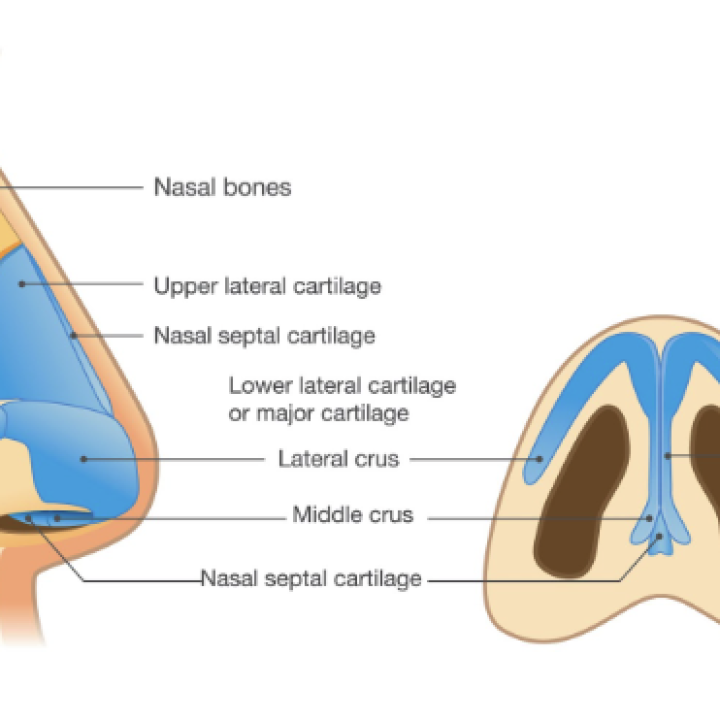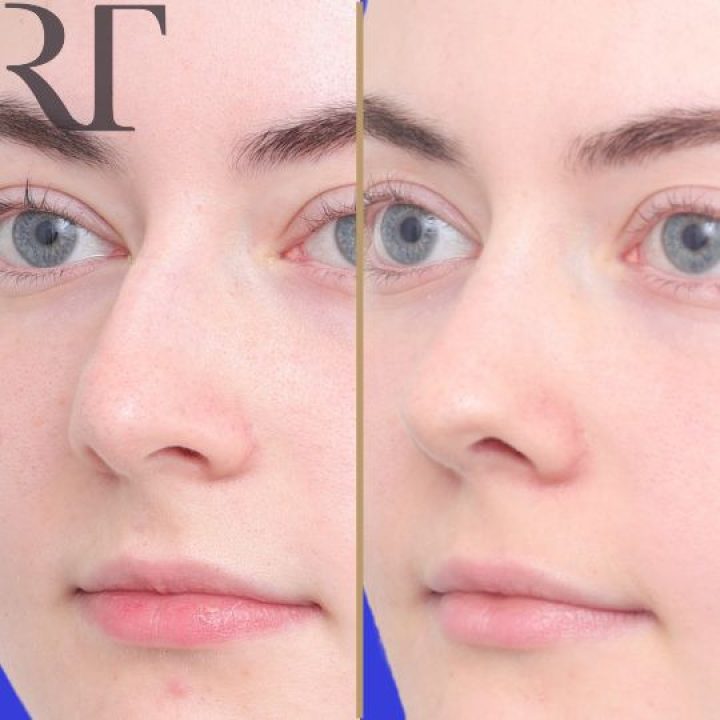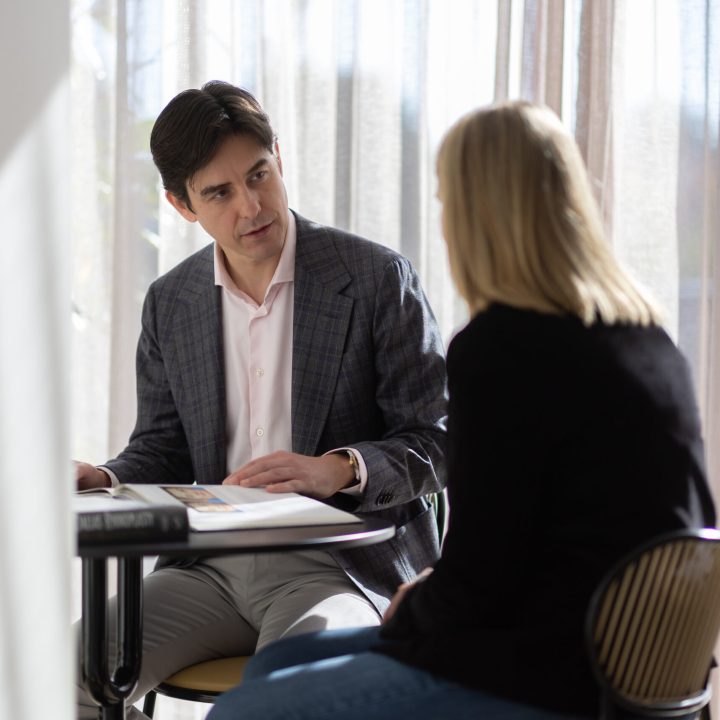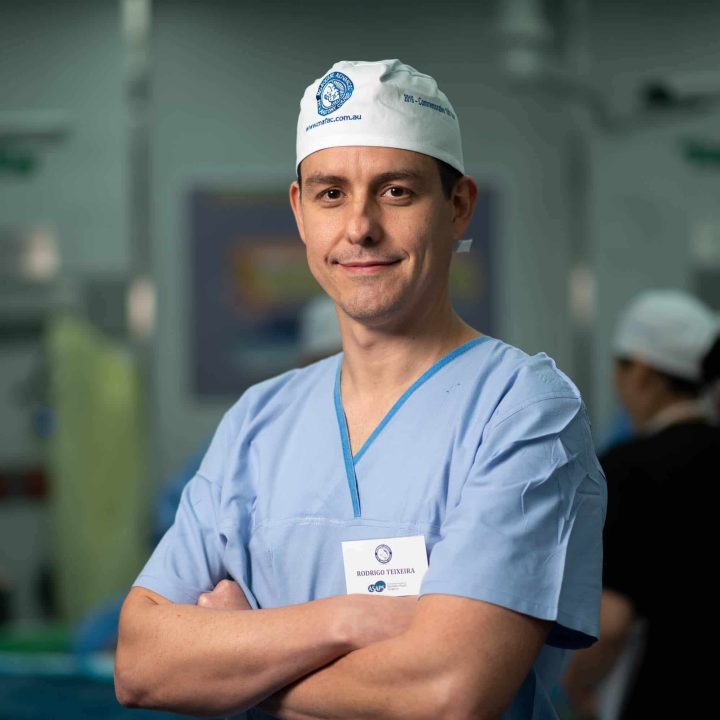Cleft Rhinoplasty Melbourne
Cleft rhinoplasty in Melbourne with Dr Rodrigo Teixeira (FRACS), Specialist Plastic Surgeon, is a reconstructive procedure to refine nasal shape and improve breathing in individuals affected by cleft lip and palate. It addresses both function and form, restoring balance, support, and proportion in harmony with surrounding facial features.
What is a Rhinoplasty for Cleft Lip?
Cleft rhinoplasty is a highly specialised procedure that addresses structural and developmental changes specific to cleft-related anatomy. While standard rhinoplasty may also improve function and form, cleft rhinoplasty requires tailored techniques to rebuild cartilage, bone, and soft tissue following established cleft patterns and previous repairs.
The procedure may involve repositioning or reshaping nasal cartilages, refining the nasal tip, and correcting septal deviation to improve breathing and symmetry. Because cleft-related nasal changes are unique to each individual, surgery is carefully planned according to the patient’s anatomy, age, and previous treatments. Cleft rhinoplasty is often performed once facial growth is complete, typically in adolescence or adulthood, and may form part of the final stage in comprehensive cleft care.
You can also learn more about other nose procedures on our Rhinoplasty Melbourne page.
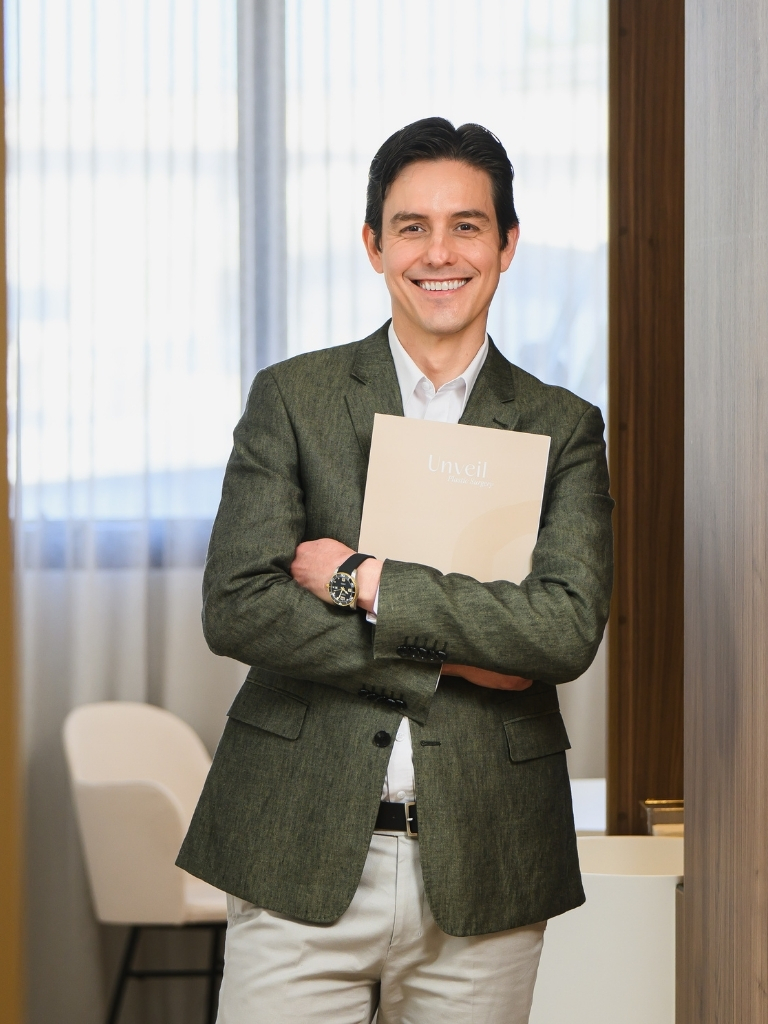
Learn more about Dr Rodrigo Teixeira and his approach to plastic surgery and patient care.
Differences Between Unilateral and Bilateral Cleft Rhinoplasty
Cleft rhinoplasty techniques are tailored according to whether the cleft affects one side of the nose (unilateral) or both sides (bilateral). Each presents unique structural challenges that require distinct surgical strategies to restore nasal balance, projection, and function.
Unilateral Cleft Rhinoplasty
In unilateral cleft rhinoplasty, surgery focuses on correcting asymmetry between the cleft and non-cleft sides of the nose. The lower lateral cartilage on the cleft side is often displaced, flattened, or rotated, and the nasal septum may deviate toward the unaffected side. Surgical correction typically involves repositioning or reshaping these cartilages and, when needed, performing septoplasty to improve symmetry and airway alignment. The goal is to re-establish balance between both sides of the nose and achieve a smooth transition between the nostril sill, alar base, and tip.
Bilateral Cleft Rhinoplasty
Bilateral cleft rhinoplasty addresses both sides of the nasal deformity, which may include a short or retracted columella, wide nasal base, and reduced tip projection. The procedure aims to restore nasal length, definition, and symmetry across the midline by lengthening the columella, refining cartilage shape, and repositioning the alar bases. In asymmetric bilateral cases, surgical planning emphasises achieving the best possible balance between both sides. Definitive correction of columellar length and projection is usually performed once growth is complete, as early overcorrection may affect development.
Rhinoplasty Stages in Cleft Lip Surgery
Primary Cleft Rhinoplasty
Primary cleft rhinoplasty is performed during the initial cleft lip repair, allowing the surgeon to correct lip and nasal asymmetry simultaneously. The focus is on improving nasal symmetry, supporting cartilage alignment, and establishing a foundation for balanced growth. The procedure is usually performed through the same incisions as the lip repair, using gentle dissection to reposition the septum and lower lateral cartilages without disrupting growth potential. In bilateral clefts, both cartilages are stabilised and the columella is lengthened and aligned.
Definitive Cleft Rhinoplasty
Definitive cleft rhinoplasty is performed once facial growth is complete, usually in late adolescence or adulthood. This stage provides more extensive correction, addressing residual deformities and functional issues. The open rhinoplasty approach allows access for structural grafting, typically using cartilage from the septum, ear, or rib, to rebuild nasal support, projection, and symmetry. Internal silicone splints (Doyle stents) may be placed to maintain shape and protect internal structures during healing.
Adjunct Procedures
Additional refinements may be performed to complement any stage of cleft rhinoplasty. These include cartilage or camouflage grafts, alar base modification (alarplasty), local tissue flaps, or soft tissue thinning to achieve smoother nasal contours. The selection of adjunct procedures is personalised, enhancing both form and function while maintaining the integrity of previous repairs.
Cleft Rhinoplasty – What to Expect From Initial Consultation to Recovery
Consultation
Your consultation with Dr Rodrigo Teixeira begins with a thorough assessment of your nasal structure, airway function, and any previous cleft or nasal surgery. He reviews your medical history, discusses your goals, and performs a detailed examination to evaluate cartilage support, septal alignment, and nasal symmetry. Clinical photographs and, when needed, 3D imaging assist in planning and visualising achievable outcomes.
Each surgical plan is tailored to the individual, addressing both function and appearance. Dr Teixeira explains the treatment stages, expected recovery, and aftercare process, ensuring that patients feel informed, and supported in their decision.
Day of Surgery
On the day of surgery, you will meet Dr Teixeira, the specialist anaesthetist, and the surgical nursing team, who will guide you through every step of the process. Pre-operative safety checklists are completed, and your surgical plan is reviewed before entering theatre.
Cleft rhinoplasty is performed under general anaesthesia in an accredited hospital in Melbourne. After surgery, you will rest in recovery where the nursing team monitors your comfort and progress. Most patients stay in hospital overnight for observation, with the team available to assist with early recovery and postoperative care before discharge.
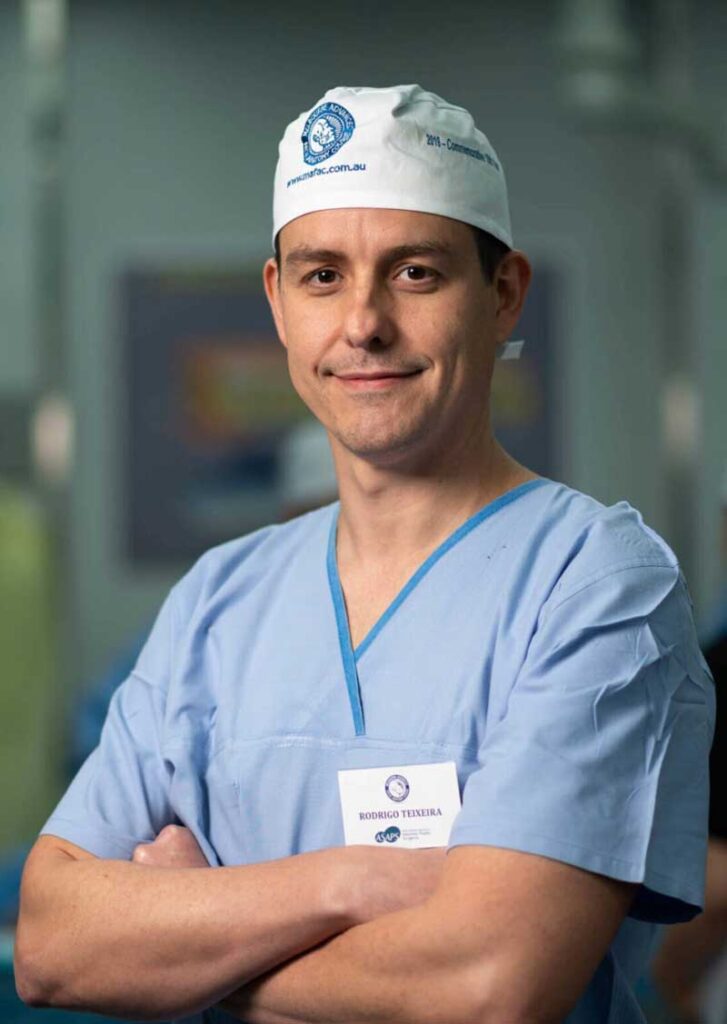
Risks and Considerations of Cleft Rhinoplasty Surgery
All surgical procedures carry potential risks, and outcomes can vary depending on individual anatomy, tissue healing, and prior cleft repairs. Understanding these possibilities is an important part of preparing for surgery and providing informed consent.
Common or temporary effects may include:
- Swelling, bruising, and nasal congestion
- Mild bleeding or oozing from the nostrils
- Temporary numbness or reduced sensation around the nose or upper lip
- Localised tenderness or discomfort
- Minor asymmetry or irregularity as tissues settle
Less common complications may include infection, delayed wound healing, visible scarring, septal perforation, graft movement or absorption, or persistent nasal obstruction. In rare cases, revision surgery may be required to refine shape or function.
Dr Rodrigo Teixeira’s approach to cleft rhinoplasty includes meticulous surgical planning, conservative tissue handling, and close postoperative monitoring to support safety and optimal healing. Written aftercare instructions are provided, and all potential risks, benefits, and limitations are discussed thoroughly during consultation.
Recovery & Aftercare
Mild swelling, bruising, and nasal congestion are expected in the first one to two weeks and gradually improve as healing progresses. Patients are advised to rest, keep the nasal passages clean with saline sprays, and avoid nose blowing or pressure on the area while splints are in place. Internal supports are usually removed after about one week, and residual swelling continues to refine over several months.
Most patients resume light daily activities within 10–14 days, though recovery can vary depending on the extent of surgery and whether it is a primary or revision procedure. The nasal shape and function continue to improve as tissues settle and scar tissue matures over the first 3–12 months.
Follow-up appointments with Dr Teixeira and his team are scheduled regularly to monitor healing, adjust aftercare where needed, and provide reassurance throughout recovery. Written instructions and ongoing support help ensure comfort and a safe, predictable outcome.
Our Melbourne Clinic
Our clinic is located in Ivanhoe East, and offers a professional and discreet environment prioritising patient safety and comfort. Services include 3D imaging for surgical planning, on-site recovery rooms, and private consultation areas, providing a confidential and supportive experience. Contact our team today to arrange a consultation.
FAQs
Cleft rhinoplasty is a specialised nasal reconstruction procedure for individuals born with a cleft lip or palate. It aims to restore nasal symmetry, structure, and breathing function, often after prior cleft surgeries.
Cleft rhinoplasty is a highly specialised procedure that addresses structural and developmental changes specific to cleft-related anatomy.
Timing depends on the stage of facial growth and previous surgeries. Definitive cleft rhinoplasty is generally performed once facial growth is complete, usually in the late teenage years or adulthood.
Yes, functional improvement is often a key goal. The procedure can correct septal deviation and internal nasal collapse that may affect airflow. Results vary depending on anatomy and previous surgeries.
Swelling and congestion are common for one to two weeks, with gradual improvement over several months. The final nasal shape and breathing function continue to refine as tissues settle, typically over 6–12 months.
Costs depend on the complexity of the case, surgical time, and hospital or anaesthetic fees. A personalised quote is provided following consultation and surgical assessment.
Bring any relevant medical records, surgical history, and imaging. Consider your breathing and aesthetic goals. A referral from your GP is required before booking your first appointment.
